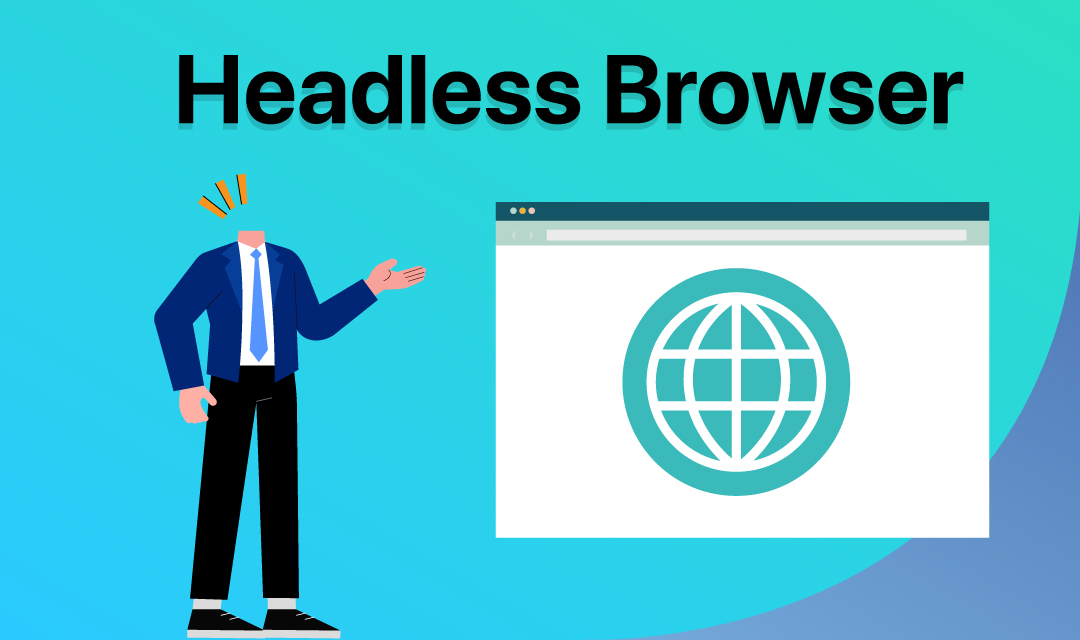
In the ever-evolving landscape of web technology, headless browsers have emerged as a powerful tool. They offer developers a GUI-less way to interact with websites, perform testing, and scrape data. In this article, we'll delve into the concept of headless browsers, their applications, and the various use cases that make them indispensable in the world of web development.
What is a Headless Browser?
A headless browser is a web browser without a graphical user interface (GUI). Unlike traditional browsers like Chrome, Firefox, and Edge, headless browsers perform tasks programmatically through code without GUI. The headless browser allows developers to automate interactions with web pages, scrape web content, and perform various testing and automation seamlessly.
What are headless browsers used for?
Headless browsers provide a versatile and efficient means to interact with websites programmatically, making them valuable tools for web development, testing, and automation tasks. They are particularly useful in scenarios where repetitive or automated interactions with web pages extract and analyze data programmatically.
1. Web Scraping and Data Extraction
Headless browsers are widely used for web scraping and data extraction tasks. Developers can write scripts to navigate websites, locate specific elements within a web page, and extract data for various purposes such as market research, price tracking, or content aggregation.
2. Automated Testing
Quality assurance and testing are critical aspects of web development. Headless browsers facilitate automated testing of web applications. Testing frameworks and scripts can use headless browsers to simulate user interactions with a website, perform regression testing, and check for bugs and errors. This ensures that web applications work correctly across different browsers and platforms.
3. Search Engine Optimization (SEO)
Headless browsers are invaluable for SEO professionals. They can be used to render web pages and analyze their content, enabling SEO audits and ensuring that websites are search engine-friendly. These browsers can render JavaScript-heavy content, which is important for evaluating a website's SEO performance, indexing, and ranking. This helps in identifying issues that may affect a site's visibility in search engine results.
4. Website Monitoring and Performance Testing
Businesses especially online stores rely on consistent website performance to retain users. Headless browsers help in monitoring websites, checking uptime, and assessing page load times from different locations and devices. They can simulate user interactions and record metrics related to page load times, resource usage, and rendering speed. This data aids in optimizing website performance.
5. Screen Capture and Screenshot Generation
Headless browsers can capture screenshots of web pages, making them useful for generating website previews, content sharing on social media, and visual regression testing. This is valuable for creating documentation, tutorials, and visual reports.
6. Cross-Browser Compatibility Testing
Headless browsers are used to perform cross-browser compatibility testing. Developers can verify that their websites function as expected across various browsers and browser versions without the need to interact with each browser manually.
7. Security Testing
Security professionals may use headless browsers to conduct security assessments and penetration testing on web applications. They can simulate attacks and vulnerabilities to identify security weaknesses and vulnerabilities.
Use Cases
Headless browsers have a wide range of real-world use cases across different industries and fields. Here are some practical and diverse examples of how headless browsers are used:
1. E-commerce Price Monitoring
Online retailers use headless browsers to monitor competitors' prices, ensuring that their pricing strategies remain competitive.
2. Content Aggregation
News agencies and content aggregators use headless browsers to collect articles, news, and data from various sources, creating a comprehensive database for their users.
3. Automated Form Filling
Filling out web forms automatically for tasks like registration or data submission is made possible with headless browsers, saving users time and effort.
4. Website Accessibility Testing
Ensuring websites are accessible to users with disabilities is crucial. Headless browsers assist in automated accessibility testing, identifying areas that need improvement.
5. Web Application Monitoring
Businesses use headless browsers to monitor web applications, checking for functionality issues, and ensuring that services are always available.
What are examples of headless browsers?
There are several headless browsers available, each with its own set of features and capabilities. Here are some popular examples of headless browsers:
- Headless Chrome
- Headless Firefox
- Puppeteer
- HtmlUnit
- Playwright
- SlimerJS
- Navalia
- Zombie.js
- Splash
- NodeJS
Conclusion
In the digital age, headless browsers have become an indispensable tool for developers, testers, and businesses. Their ability to perform a wide range of web-related tasks programmatically and without a graphical interface opens up numerous possibilities for automation, testing, and data extraction. As technology continues to advance, the role of headless browsers in web development and automation will continue to grow and make them a valuable toolkit for any tech professional.
Share this post
Leave a comment
All comments are moderated. Spammy and bot submitted comments are deleted. Please submit the comments that are helpful to others, and we'll approve your comments. A comment that includes outbound link will only be approved if the content is relevant to the topic, and has some value to our readers.




Comments (0)
No comment